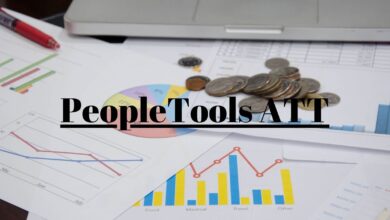Everything you need to know about Pay slip and Payroll Management

Payslips are an essential aspect for working professionals. Every worker receives an income slip. However, the majority of people don’t understand the importance of it.
Do you know the reason for the importance of a payslip?
If you’re an HR Manager or employer, you may have to prepare Employee Payslips for the end of each month.
Payslips manually created are not always accurate and can be chaotic if numerous employees are in your business.
Do you know that pay slips can be made online and modified to match the pay structure for your company? It is possible to use the automated Payroll Management Software that will aid you in creating payslips automatically for your employees.
This blog will look at various aspects of a pay slip. Continue reading to learn more.
What exactly is a Payslip?
A payslip, also known as a salary slip, is a document distributed monthly by a company to employees. It is a comprehensive detail of the salary and deductions for a specific pay cycle. The document can be sent by mail or to employees. Additionally, any business that has an office is required to provide a pay slip every month as proof of salary payments to employees, as well as deductions that are made.
Are you thinking of making your payslips by hand? Do not stress about manual processes; make them automated. HR Payroll software offers you the capability of automatically generated payslips. After you have set the date, the employee’s pay will be calculated, and pay slips will be sent immediately to the email address of every employee. Each company’s salary slip format differs. Below is a standard salary slip format for you to better understand.
Salary Slip Components
The employer prepares the pay slip each month, and employees can download the pay slip as a PDF file. But what percentage of employees know the structure of the salary slip and the components?
Most people think about the importance of a pay slip only when applying for a loan or getting a new credit card. Here’s the main reason to get an understanding of the format of the salary slip.
If you’re looking for a fresh job, consider your choices carefully.
Make tax-related reductions as low as possible by using any allowed deductions.
Be aware of the amount of salary that must be kept (Employee Provision Fund, EPF ESI and so on.)
A pay slip, also known as a wage slip, is an essential document that includes the employer’s name and the individual’s name title, name, and code. Earnings/income and deductions are the two main types of salary components.
Income
This section of the pay slips contains the base allowances and salary. Each component of the salary is described below.
Basic Income
As the name suggests, “basic” is the most essential element in the pay. It comprises 35-50% of the total salary. It is the basis for the other pay components. In lower pay levels, the minimum will be more expensive. Other allowances usually increase with the advancement of an employee within the company. The basic salary is usually reduced by employers so that the allowance doesn’t increase. The employee is accountable for the total taxes on their salary. The first line on the paycheck slip’s earnings section is the basic.
Dearness Allowance
To offset the negative effects of inflation on pay, workers are offered to counteract the effects on wages. One is given an allowance for the cost of living. It’s usually 30% to 40% of basic salary. DA is directly related to costs of living. It varies according to the region. Both DA and Basic are considered to be forms of pay for taxation. Therefore, it is tax-deductible. It is listed on the earnings page after the pay slip’s basic payment.
House Rent Allowance
The employees who live in rental housing are eligible for Housing Rent Allowance (HRA). The HRA is calculated based on the city where the worker lives. In major cities, HRA equals 50% of the base salary. It’s 40% of the base salary in every other city. Since it’s an allowance, the housing rent allowance is tax-free to a certain amount, provided that the worker can pay the rent. It is listed on the pay slip’s earnings side. You can avoid taxation on income on HRA. It is exempt to the smallest of the following:
Actual HRA Received
Rent paid every year is 10% of the wage (Basic plus DA)
50% from (Basic + DA) If the city comprises Chennai, Mumbai, Kolkata or Delhi, and 40% from (Basic + DA) for cities outside these.
Conveyance Allowance
Conveyance Allowance is the amount that an employer offers workers to cover the expenses of commuting the worker to work and home. It’s a concession. Therefore, it is tax-free to an amount. This can be seen on the income statement of the salary side. The conveyance allowance is where income tax can be escaped. The exemption must be the minimum of the following:
INR 1600/month
Actual allowance for conveyance received
Medical Allowance
A medical allowance is an amount the employer pays an employee to pay for medical expenses incurred when they work. In the case of a medical allowance, income tax can be avoided. The employer can only give the employee this amount after receiving evidence or a medical bill. The allowance will be given to the employee, even when they do not prove their medical expenses, as it is tax-free. The allowance of the amount of INR 15,000 is exempt from tax if the documents are provided. The information can be found in the pay slip’s earnings section.
Leave Travel Allowance
Employers can use it to pay employee travel costs while taking leave. The policy also covers relatives of employees’ expenses for travel. To be eligible for the discount, you must provide evidence of your travel per specific criteria. The travel allowance for leave exempt from tax does not apply to expenses you incur during your travel that aren’t directly connected to transportation. In addition, the exemption is only available for two travel trips spanning four years. The exemption is listed on the pay report’s earnings section.
Special Allowances in Salary
Performance-based compensation is a form of specific compensation. They are usually given to employees to help employees to be more productive. Furthermore, the limits vary between businesses. The benefits that are specifically arranged for employees are tax-free 100. They are listed on the pay slip’s earnings section.
Deductions
The section on deductions of the pay slip includes PT, TDS, and EPF. An explanation of the same is provided on the website.
Professional Tax
A small tax, also known as a “professional tax”, is set by state governments for professional employees. In a handful of states, it is tax-deductible. The following states fall into these categories: West Bengal, Andhra Pradesh, Karnataka, Maharashtra, Tamil Nadu, Gujarat, Telangana, Chhattisgarh, Kerala, Assam, Orissa, Tripura, Meghalaya, Bihar, Jharkhand, and Madhya Pradesh. The tax is assessed to anyone who earns a living from media, not just experts. This amount reduces the income tax deductible. It is usually only a few hundred dollars monthly and is taxed at the maximum marginal rate. It’s visible on the side of the pay slip that lists deductions.
Tax is deducted at the source
It is the amount that employers withhold for the tax division for income. It’s based on the tax rate of the employee’s total bracket. You can reduce this amount when investing in tax-free securities, such as equity funds (ELSS), NPS, PPF, and tax-saving FDs. It is visible on the pay slip, which shows deductions. Your take-home pay increases because of the investment in section 80C-related instruments as per the Income Tax Act. It is possible to buy the mutual fund (ELSS), give the company documents for investment, and then make claims for TDS refunds.
Employee Provident Fund (EPF)
It’s the employee’s provisional contribution to the fund. In the income tax law, section 80C applies to this. The accumulation of cash to fund an employee’s retirement is referred to by the name of a “provident” fund. The employees’ Provident Fund Organization is responsible for supervising the fund. EPF contributions amount to 12% of the employee’s salary. In the case of retirement benefits for employees, the employer contributes similarly.
However, not all the money given to the employee’s provision fund will end there. The Employees Pension Scheme gets 8.33% of the contribution. If the monthly earnings of employees exceed INR 15,000, their contributions are INR 1,250. 8.33% of employees’ earnings below INR 15,000 go to the Employees’ Pension Scheme. The remainder is deposited within the EPF program. Employees may, however, opt to leave the EPF program (up to a certain amount) and instead invest in other products that offer better returns, for instance, Equity funds (ELSS). On the part on the pay slip dedicated to deductions, the Employee Provident Fund is mentioned.
What is the significance of a Pay Slip?
First, a payslip is essential because it proves the employee is paid in the ABC business. By presenting a payslip, the employee can verify their credit score and obtain loans from banks along the way.
Many MNCs will not accept pay slips for employees without the required information. Therefore, it is each employee’s job to ensure that the pay slip contains all the information required.
In the end, an employee’s salary slip:
Proves your employment status
It assists in tax planning
Helps negotiate salary
It simplifies the process of borrowing and more.
Things to remember about your Pay slip
The pay slips are beautiful; however, the payroll team must put so much effort into determining the net amount of pay.
Today, numerous automatic payroll management programs in India can provide you with customizable pay slip templates. The complicated calculations are made automated by this software.
You can modify the pay slip templates according to your organization’s requirements with Pay slip generator.
It is essential to understand that TDS calculations are complicated. They are complicated. Automatic software is always up-to-date on the government’s compliance requirements.
Advantages of electronic Pay Slips over manual Pay Slips
Creating salary slips manually appears simple, but it’s not. Every month, HR administrators spend a lot of time and effort into the process. However, many companies in India have recently started using electronic pay slips.
Employing payroll software for HR E-payslips can be prepared in advance and distributed to employees.
Here are a few of the significant advantages of electronic payslips over paper ones:
Cost-effective
Because payslips are kept within the system for processing payroll, workers can download and print their slips from their personal computers. This is how companies can get rid of the time-consuming and costly paperwork.
In a recent survey, 83% of respondents said switching to electronic payslips enabled the company to cut costs.
Environmental-friendly
Manual payslips are produced using ink and paper, which harm the environment. On the other hand, E-Slips cut down on the need for ink and paper. Companies who want to do their part for the environment must eliminate traditional paper-based pay slips.
Secure
Employers do not have to worry about their confidential data getting into the wrong hands.
Placed in a Single location
Employers in the past had little option but to go through a myriad of documents to discover the exact details of their prior payments. Fortunately, electronic pay slips have made this task much more manageable. Employees must sign into their HR system to view their previous pay slips.
Accessibility 24×7
Today, most HR and Payroll processing systems have mobile applications that allow employees to download and access their payslips regardless of where they may be.
Conclusion
Why do you have to endure the pain of getting a custom-designed template for your payslip even though you already have plenty to manage and complete?
If you’re looking for automated payroll software that can generate your own payslip, Stop searching now and connect with us today for quick and accurate payroll processing.
Continue Reading: bizjournalinsider.com




